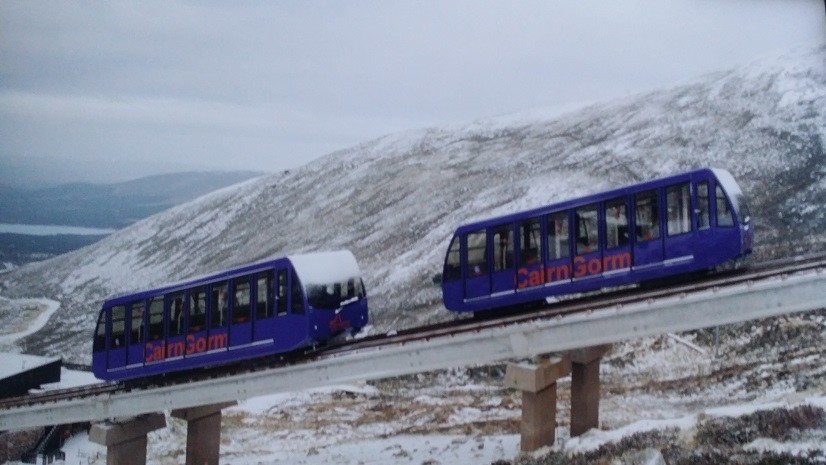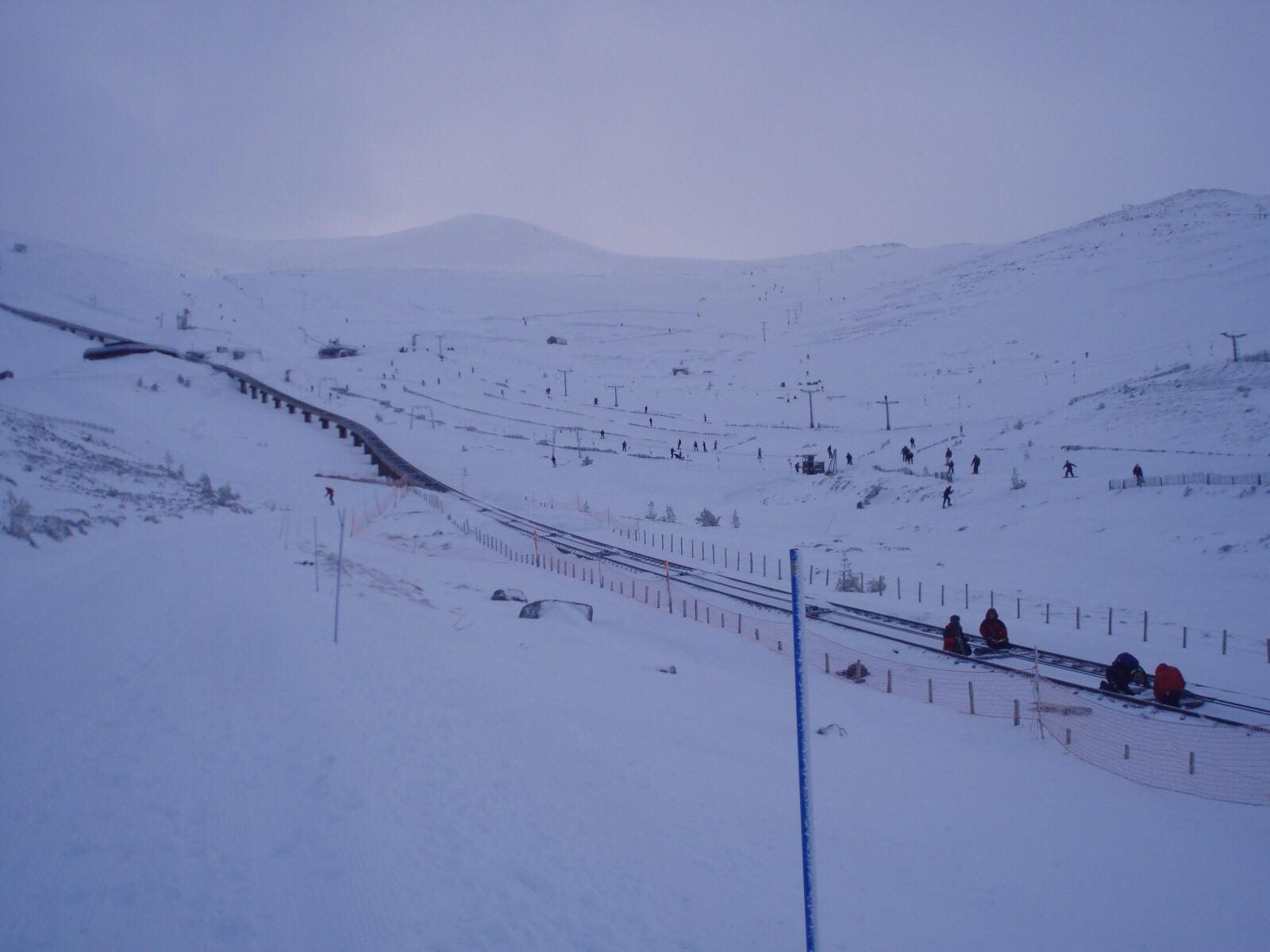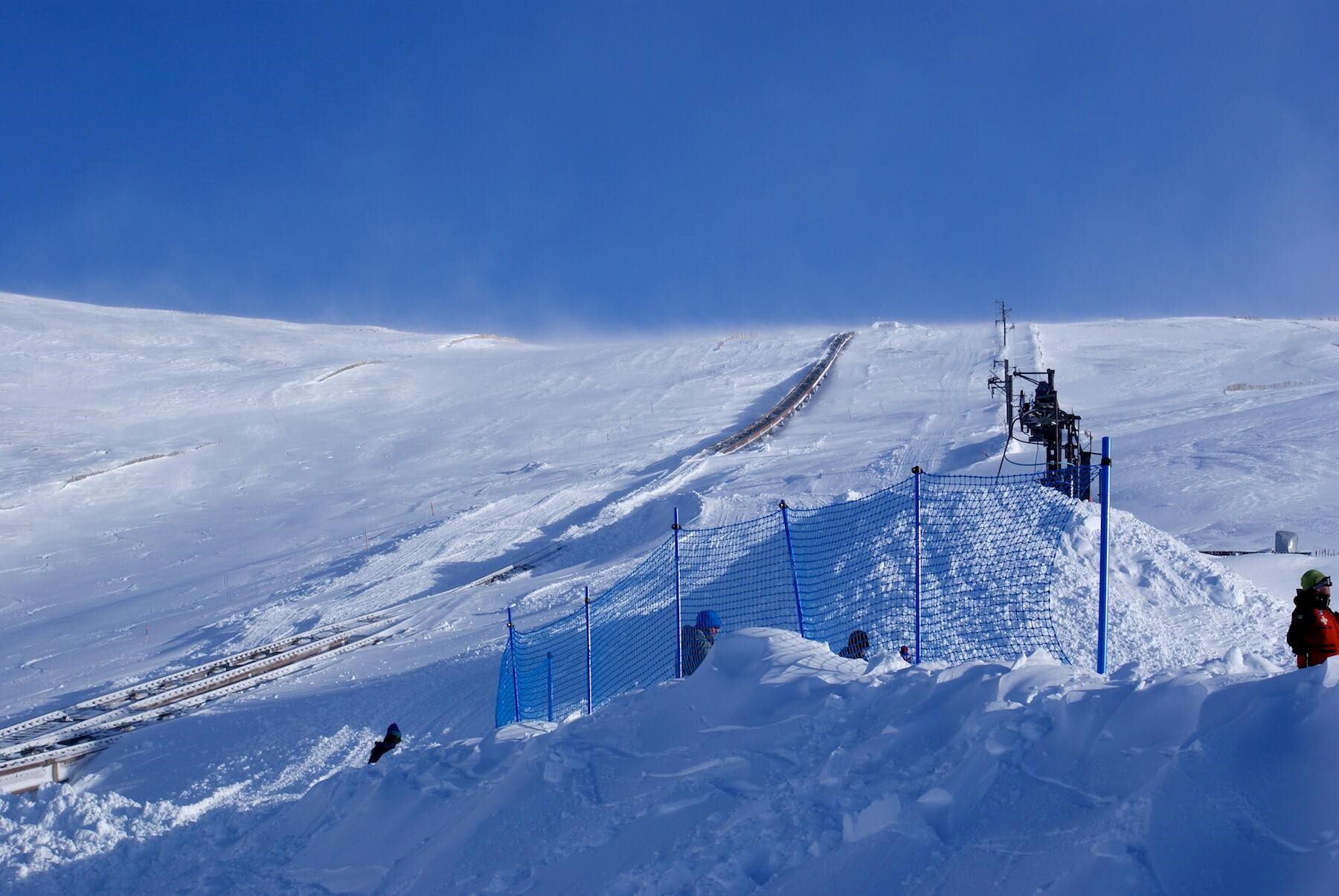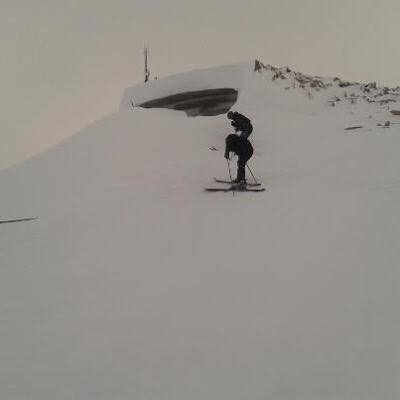
It has now been 9 months since the Funicular Railway was taken out of service but whether or not it will be repaired remains unknown.
The focus though of Highlands and Islands Enterprise is entirely on whether or not it can be repaired. The HIE website has this:
‘’HIE has consistently stated that its preferred option is to repair the structure and return the mountain railway to service which all investigations carried out so far indicate would be technically achievable’’
and
‘’HIE and the Scottish Government agree that repair is the preferred option, in principle’’
The question then isn’t “could it be repaired” but rather “should it be repaired?.”
In the years since the Funicular went into service is there evidence that the Cairn Gorm mountain business has prospered or failed?
Since 2002, the hill business has lost the Coire Na Ciste Chairlift, The West Wall Chairlift, The White Lady T-Bar, The Fiacaill T-Bar and the Aonach Poma. These lifts represented approximately 40% of the uplift capacity and there have been no worthwhile new uplift installations made during the same time period. The hill has also lost the Ciste Base Station café and the Sheiling catering outlet with nothing new to replace them either.
There is also considerable evidence of dilapidation throughout the area which demonstrates that the business has not been generating the level of profitable revenue to maintain the assets. For example, the car park surfaces are in a very poor condition (see here) and the environs around the Daylodge are in such a state that the pathway around it has been closed to the public (see here).
In addition, the business has failed commercially in 2008 and again in 2018.
It is therefore very clear that the hill business has been a failure since the Funicular went into service. Is there any evidence that the responsibility for the failure rests with the Funicular?
Non skiing passenger numbers were predicted to be 160,000 per annum and this number was surpassed in the early years of service. The average was 174,935pa in the first 5 years of service [180,000: 182,000: 177,000: 164,046 and 171,406]. However in the last 5 years, prior to the failure of the funicular, the average number was just 130,990 [119,585: 127,092: 137,776: 138,712: and 131,788]. It’s clear that non skiing passenger numbers have fallen significantly and are well below predictions. It should also be kept in mind that many of these passengers were not paying the full fare. Coach parties receive large discounts and 2 for 1 offers on Ipson and Groupon bolster the number but are also uneconomic.
In the time period since the Funicular was brought into service the summer tourism business in Strathspey has increased considerably with many adventure tourism businesses having been set up. During the time when numbers in Strathspey have been increasing, the numbers using the Funicular have been decreasing.
Will repairing the Funicular be likely to reverse that trend?
Proposals to spend circa £2m on a Ptarmigan building extension and revamp are ill advised. While Funicular numbers may be bolstered initially they will quickly drop off as the novelty wears away, just as it did in the early years. Repeating the mistakes of the past would be foolish and will be likely to condemn the hill business to ongoing failure.
The Funicular itself has in-built inefficiencies. The passing loop is at the track mid-point (top photo) but that isn’t where the upload/download point has been located. The train has therefore to make two stops rather than one whenever uploading/downloading passengers outwith the top and bottom stations. That is hugely inefficient and greatly reduces the carrying capacity per hour.
In addition, the track design is such that its subject to being covered by snowdrifts which have to be cleared by hand before the Funicular can operate. The track is actually lower than the Home Road at a point not far above the Daylodge Station and unsurprisingly it gets drifted over there fairly easily.

The track being covered by snowdrifts is something that occurs more frequently than most people might realise and it’s quite clear that the structure itself traps snow and will always be subject to these difficulties. Its precisely because of issues with drifting snow that funicular railways in the Alps tend to be underground.

It is also well known that the tunnel mouth, which is located near the top, can have as much as 7 metres of drifted snow in front of it that has to be hand dug out before the funicular can operate.

The significance of these operational inefficiencies should not be under-estimated. They lead to cost increases but no corresponding increase in revenues. Late opening also leads to customer frustration and has a negative impact on repeat business.
All of these negatives have led to a collapse in the Cairn Gorm share of the Scottish Snowsports market as customers have drifted away from Cairn Gorm and gone to the other resorts. The data doesn’t lie and it shows that the long term average market share at CairnGorm was 40.6% in the 10 years to 2013. That share had collapsed to just 23.6% in the 2017/18 season.
The question that HIE and the Scottish Government would seem to be avoiding is this: will repairing the Cairn Gorm Funicular remove the in-built inefficiencies and lead to a profitable outcome?
Those who favour the introduction of Mountain Biking on Cairn Gorm should know that the Funicular is unsuited to the carriage of bikes due to capacity issues and repairing it will not change that fact.
There has already been commentary on the proposal, put forward by the SE Group, to construct an Alpine Coaster on the Fiacaill Ridge. The objective here is not to discuss that proposal but it is clear that not all passengers who might use a Coaster would be new business and it is possible that having it there may reduce the numbers using the Funicular further thereby making it even less financially viable.
There has been no public consultation to determine what the customers would like as an outcome despite the fact that it is customers who will ultimately decide the future success or failure of the Cairn Gorm Mountain business.
On 3 July 2019 HIE had this to say:
‘’……we must look to the future long-term and ensure that local people have a meaningful opportunity to put forward views that will inform a future masterplan……’’
Whether or not the Funicular should be repaired is a major decision that will have long-term repercussions for the hill business and the local economy. To date, there has been no consultation with local people about its future. HIE should also be aware that the wider community has a big stake in the outcome too. If the wrong decisions are made they will continue to avoid coming to Cairn Gorm.
Customers have made their views about Cairn Gorm and the Funicular Railway very clear, by going elsewhere. The drop in visitor numbers should tell HIE that if people are to be encouraged to return to Cairn Gorm, a dramatic change of strategic direction is necessary.
The evidence strongly suggests that the Funicular Railway is a financial burden on the operating company and that the public must have a say about whether it should have a future or not.
What should happen now?
- The Scottish Government should stop listening to HIE because they have consistently failed to do the right things at Cairn Gorm
- Local and wider consultation about whether or not the Funicular should be repaired needs to be undertaken without delay.
Glenmore gondola would be much more suitable use of the £10 million. Close the access road to all mountain traffic.
Could be used by hikers, bikers and skiers year round. Basic problem with the funicular is that outside of the ski season the VMP means its only practical purpose is sight seeing (as opposed to outdoor recreation which can attract repeat custom).
Doug.
Glenmore gondola would be much more suitable use of the £10 million. Close the access road to all mountain traffic. Could be used by hikers, bikers and skiers year round. Basic problem with the funicular is that outside of the ski season the VMP means its only practical purpose is sight seeing (as opposed to outdoor recreation which can attract repeat custom).
For those of an elderly persuasion its the only way we can get to the top.
Last season was the first I’ve not boarded at the Gorms since I started circa 2010, used to be my go to place due to the length of the runs etc but since Natural Retreats took over I’ve slowly watched it be destroyed and be ruined!
Scottish Government needs to step in at this point, stop all the stupid plans put forward by HIE and do a proper investigation into this before even more public money is wasted on pie in the sky ideas.
Good article and raises the vital point that we need a broader view of the whole mountain and how it would be sustainable both financially and ecologically rather than just “fix” something that has pretty much been broken since it was installed.
It’s going to be really hard to do that though……..my tuppance does lead me to think that the road should be closed at least to the Ciste and everything starts there…..Mission impossible? Perhaps.
Good article. What would be the demolition costs of the funicula? As a skier I have only used the funicular for access to the lift system (once a day). T-bars, pomas or chairlifts (even gondolas) are much easier to use for skiers (most without the hassle of taking off skis etc.). After originally starting my ski career in Scotland I now ski almost entirely in the Alps and, having done several seasons in Kitzbuhel, know the Hahnenkamm gondola can shift large numbers of skiers per hour. The problem with Scotland for non-surface lifts has always been weed speed but I understand gondolas/chairlifts in the Alps now have higher wind tolerance. They would be a lot more popular with skiers than the funicular and the Nevis gondola has shown it can still attract summer visitors.
An excellent article from Alan Brattey and the comment from Doug Bryce is spot on, with his gondola and road closure suggestion.
Indeed when the initial planning, for the approval of the Funicular, I wrote a letter disagreeing with the building of a train system. Instead I cited, that in the Alps, gondola’s were being operated successfully in high winds and furthermore with significant summer tourist traffic. At Anach Mhor, their gondola seems to have no impediment for less mobile tourists. Yet when the train system was being mooted it was one of the main attributes of the proposed funicular at Cairngorm. My suggestion of course was ignored because the board were too blinkered in favour of their grandiose scheme.
SCRAP THE TRAIN AND BUILD A GONDOLA SYSTEM. This will bring back the snow holding potential of the White Lady piste, allowing the snow to drift into the gully and not the train lines. Also a gondola, will highlight the wonderful montane environment from an elevated perspective, travelling gracefully through the beautiful pine wood landscape of Glenmore, to the arctic tundra at the top station.
HIE need to think radically.
Great article, Alan. Your article and all the very valid comments demonstrate:
– that the funicular is definitely not the uplift of choice.
– that there are many very sensible options for uplift for skiing/snowboarding and for accessing the mountain by non-skiers that need to be given equal weighting and consideration than the over-ambitious and financially unsound vision of the future being promoted by HIE. Will HIE and Aviemore & Glenmore Community Trust listen? Lets’ hope so!
Mmmm
This article is no more than a rehash of this very recent article. http://parkswatchscotland.co.uk/2019/07/15/the-future-for-uplift-on-cairngorm-financial-considerations/
So to make any uplft a commercial success it is apparent that you need more bums on seats?
So the real discussion really should focus on 2 points.
1 Why was a furnicular chosen for the mountain as opposed to say a gondola system? ( as some are suggesting now)
I was not around at the time but I suspect it was for climatic and environmental concern reasons, maybe some of the old timers shall illuminate further.
2. Having looked at point 1 then a real cost benefit analysis should be looked at in terms either repairs or improvements ie banks and steel as opposed to concrete lintels should be looked at versus the building of a gondola system. I can only suggest that repairs or improvements have already been calculated as being cheaper than a gondola system.
In the end it does not really matter unless the daft Visitor Management Plan is ditched then the there is not going to be enough users for the blue Choo Choo or shiny gondolas.